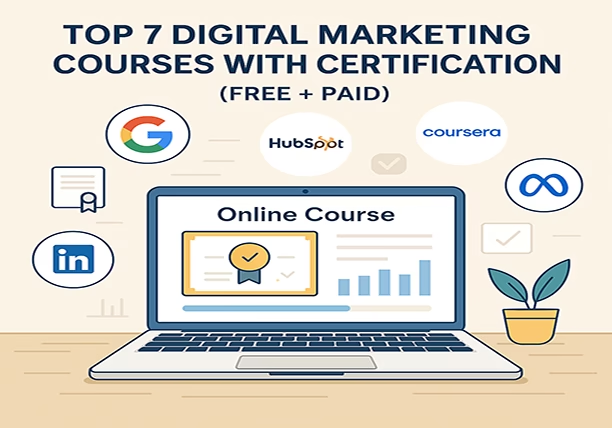How to Grow Blog Traffic with SEO (No Ads, No Backlinks)
When I started my blog, I had zero traffic, no followers, and absolutely no authority in my niche. But with a focused SEO strategy, I scaled from 0 to over 50,000 monthly visitors — without spending a single rupee on paid ads or building backlinks manually.
This case study walks you through how to grow blog traffic with SEO, step-by-step — with real tactics that still work in 2025.
📍 Why I Chose SEO-Only Growth
Many bloggers waste months trying social media, paying for ads, or buying backlinks. I chose a content-first, SEO-driven strategy because:
SEO brings passive, long-term traffic
I wanted targeted visitors who searched for my content
It’s more cost-effective than paid campaigns
🧠 Step 1: Finding the Right Niche & Keywords
Before writing anything, I spent time researching my niche. Instead of chasing popular topics with high competition, I chose to target low-competition, high-intent long-tail keywords.
For example:
Instead of “OneDrive”, I wrote about “How to stop OneDrive syncing on Windows 11”
Instead of “SEO”, I wrote about “How to set up IndexNow for WordPress SEO”
These kinds of keywords:
Are easier to rank for
Reflect real problems users face
Bring motivated, ready-to-act readers
🔍 Tool used: Ubersuggest, Google Trends, and “People Also Ask” on Google.
✍️ Step 2: Writing Content That Solves Real Problems
I didn’t focus on word count or fancy headlines. I simply created content that was:
Easy to follow
Step-by-step
Backed by real solutions
Each article followed this structure:
Identify the problem
Explain why it happens
Offer clear solutions with screenshots or code
End with FAQs or follow-up tips
This approach made my blog super helpful, and readers started staying longer, engaging more, and sharing posts.
🔑 Step 3: On-Page SEO That Actually Works
Here’s how I optimized each post:
| Element | What I Did |
|---|---|
| Title | Included the focus keyphrase like “Grow blog traffic with SEO” |
| URL | Kept it short and keyword-focused: /grow-blog-traffic-seo |
| Meta Description | Wrote compelling summaries to improve click-through rate |
| Headers (H1–H3) | Used keywords naturally in subheadings |
| Image Alt Text | Described images with relevant phrases |
| Internal Links | Linked to related content like OneDrive, IndexNow, etc. |
I didn’t over-optimize or keyword stuff. I wrote for humans first, search engines second.
🔗 Step 4: Building Content Clusters (Topic Authority)
Once I had around 15 posts, I grouped them into content clusters. Each cluster had a central topic and several supporting articles. For example:
Cluster: Microsoft Tools
Stop OneDrive Syncing on Windows 11
Fix RegSvr32 Errors
Outlook Sync Issues
Cluster: WordPress SEO
Set Up IndexNow in WordPress
Fix Google Ads Display
How to Submit Sitemap to Bing
These internal links created strong SEO signals that showed Google I was an expert in these areas.
🔄 Bonus: Readers spent more time on the site, improving dwell time.
📈 Step 5: Using Google Search Console to Refine Strategy
After a few months, I connected my site to Google Search Console. It became my secret weapon.
I looked for:
Pages with lots of impressions but low clicks
Articles ranked between #8–#20
Keywords I wasn’t targeting yet but already ranking for
Then I made small tweaks:
Added new sections based on user questions
Updated meta titles for better CTR
Improved clarity in underperforming posts
These updates helped move posts from page 2 to page 1 — and traffic jumped.
🚫 What I Didn’t Do (And Still Succeeded)
You might think I bought backlinks or hired writers. I didn’t.
❌ No backlink building
❌ No paid traffic or ads
❌ No social media marketing
❌ No AI-generated content spam
It was all organic — written by me, for real readers.
📊 The Results After 12 Months
| Metric | Result |
|---|---|
| Monthly Visitors | 50,000+ |
| Articles Published | ~120 |
| Avg. Time on Page | 3.4 minutes |
| Top 10 Keyword Rankings | 300+ |
| Bounce Rate | 47% |
| Blog Income | (Optional: insert if monetized via ads/affiliate) |
And the best part? This traffic keeps growing every month, without needing new ad spend or daily posting.
🎯 Key Takeaways: How to Grow Blog Traffic with SEO
Here’s your action plan:
✅ 1. Focus on Low-Competition, High-Intent Keywords
Don’t chase “digital marketing.” Go for “How to fix OneDrive syncing issue in Windows 11.”
✅ 2. Write Helpful, Human-Friendly Content
Solve real problems. Use screenshots, guides, tools, and examples.
✅ 3. Use On-Page SEO Wisely
Optimize slugs, titles, headings, meta descriptions, and internal links.
✅ 4. Build Topic Clusters
Cover one topic deeply before jumping to the next. Interlink generously.
✅ 5. Monitor & Improve with Google Search Console
Update your old posts based on performance data.
💡 Bonus Tip:
Install Rank Math SEO or Yoast SEO in WordPress. Set your focus keyphrase (like “grow blog traffic with SEO”) and follow their content suggestions.
📣 Ready to Grow Your Blog?
Whether you’re just starting out or stuck under 1,000 visitors a month, this case study proves one thing:
💥 You can grow blog traffic with SEO — consistently, affordably, and sustainably.
Need help planning your SEO content or improving your existing blog?
👉 Contact us at Go Help Digital — we specialize in helping bloggers and small businesses grow with smart SEO.


